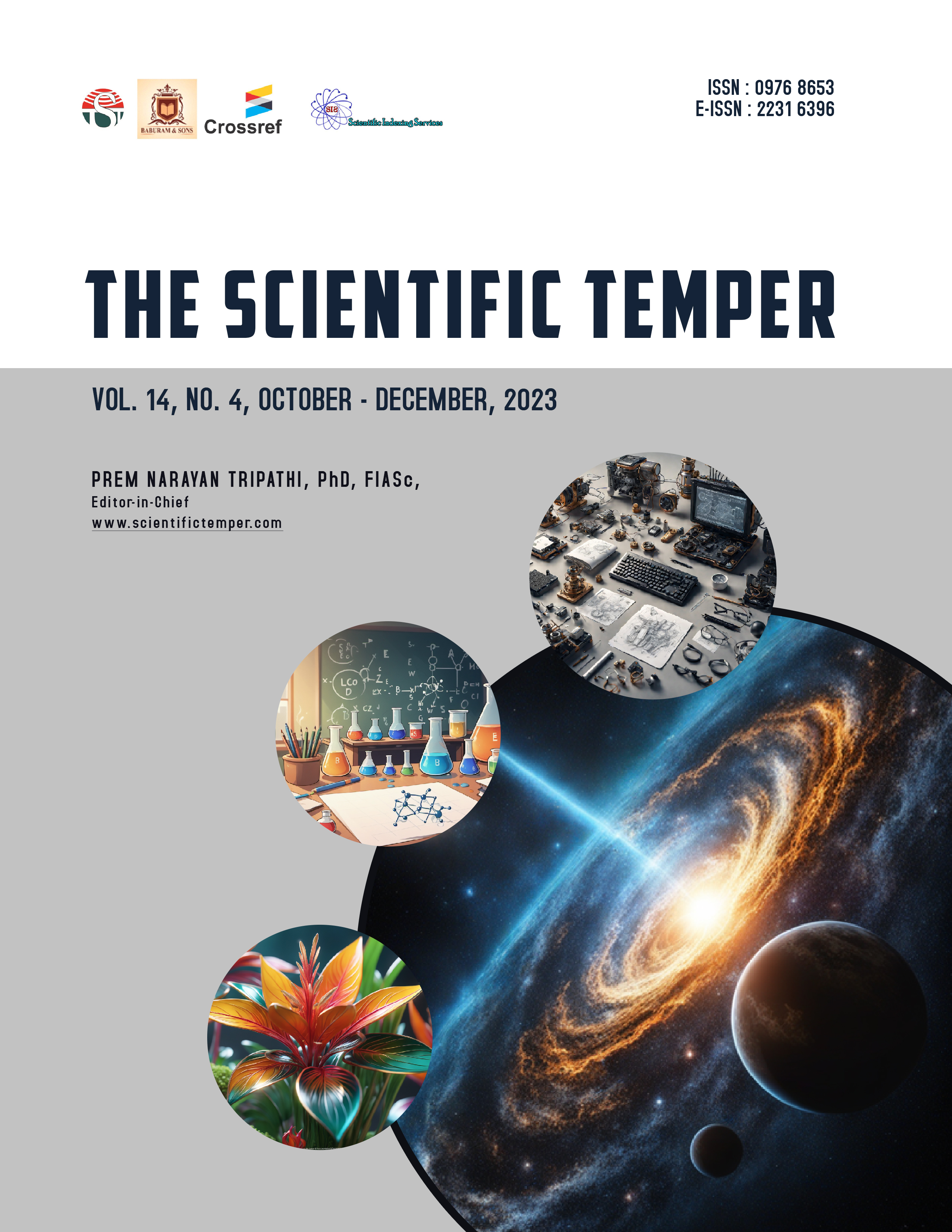A smart irrigation monitoring service using wireless sensor networks
Downloads
Published
DOI:
https://doi.org/10.58414/SCIENTIFICTEMPER.2023.14.4.44Keywords:
Smart irrigation, Soil moisture, Crop yields, IoT, Zigbee protocol.Dimensions Badge
Issue
Section
License
Copyright (c) 2023 The Scientific Temper

This work is licensed under a Creative Commons Attribution-NonCommercial-ShareAlike 4.0 International License.
The present research uses wireless sensor networks (WSN) to create a smart watering system. The system’s ability to perform real-time monitoring and management of irrigation makes sure that crops get the right quantity of water depending on their unique needs. The suggested method boosts agricultural yields, decreases labor costs, and improves water usage efficiency. The system uses a field-deployed network of inexpensive wireless sensors to track the soil moisture levels in real time. The central controller utilizes the wirelessly sent sensor data to decide when and how much water should be applied to the crops. Utilizing wireless protocols like Zigbee, these nodes connect to a central gateway, where the data is processed and examined to establish the ideal watering needs for each crop. The technology is scalable and simple to install in larger agricultural fields. The study’s findings indicate that the system can boost crop yields by up to 30% while boosting water usage efficiency by up to 60%. Farmers may decrease their water use, save time and money, and enhance their profitability by adopting the smart irrigation monitoring service powered by WSN.Abstract
How to Cite
Downloads
Similar Articles
- Arvind K Shukla, Balaji V, Dharani R, M Ananthi, R Padmavathy, Romala V. Srinivas, Precision agriculture predictive modeling and sensor analysis for enhanced crop monitoring , The Scientific Temper: Vol. 14 No. 04 (2023): The Scientific Temper
- Teklil Abadeye, Teshome Yitbarek, Isreal Zewide, Kibinesh Adimasu, Assessing soil fertility influenced by land use in Moche, Gurage Zone, Ethiopia , The Scientific Temper: Vol. 14 No. 01 (2023): The Scientific Temper
- G. Tripathi, R. Deora, FAUNA – ASSISTED LITTER DECOMPOSITION AND ITS IMPACT ON CHEMICAL AND BIOLOGICAL HEALTH OF BALANITES AEGYPTIACA BASED SILVIPASTURE SYSTEM , The Scientific Temper: Vol. 1 No. 01 (2010): The Scientific Temper
- Anita M, Shakila S, Stochastic kernelized discriminant extreme learning machine classifier for big data predictive analytics , The Scientific Temper: Vol. 15 No. spl-1 (2024): The Scientific Temper
- Chetna Dhull, Asha ., Impact of crop insurance and crop loans on agricultural growth in Haryana: A factor analysis approach , The Scientific Temper: Vol. 15 No. 01 (2024): The Scientific Temper
- Archana Bansal, Management of Crop-Residue to Control Environmental Hazards , The Scientific Temper: Vol. 13 No. 02 (2022): The Scientific Temper
- K. Sreenivasulu, Sampath S, Arepalli Gopi, Deepak Kartikey, S. Bharathidasan, Neelam Labhade Kumar, Advancing device and network security for enhanced privacy , The Scientific Temper: Vol. 14 No. 04 (2023): The Scientific Temper
- S. Sindhu, L. Arockiam, A lightweight selective stacking framework for IoT crop recommendation , The Scientific Temper: Vol. 15 No. 04 (2024): The Scientific Temper
- V. Umadevi, S. Ranganathan, IoT based energy aware local approximated MapReduce fuzzy clustering for smart healthcare data transmission , The Scientific Temper: Vol. 15 No. 03 (2024): The Scientific Temper
- C. Muruganandam, V. Maniraj, A Self-driven dual reinforcement model with meta heuristic framework to conquer the iot based clustering to enhance agriculture production , The Scientific Temper: Vol. 15 No. 02 (2024): The Scientific Temper
You may also start an advanced similarity search for this article.



